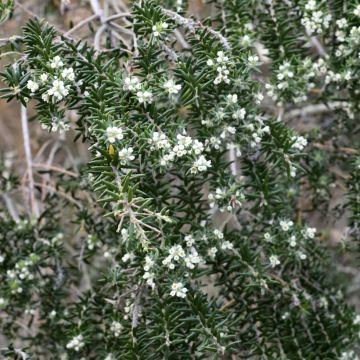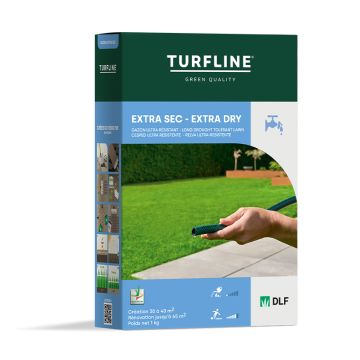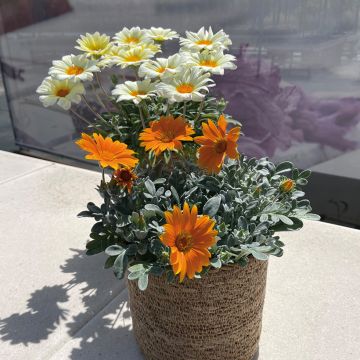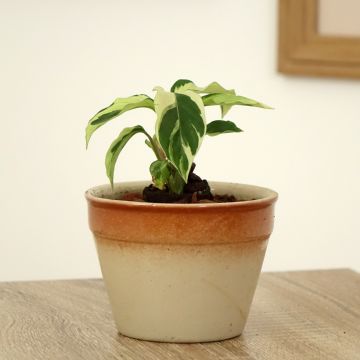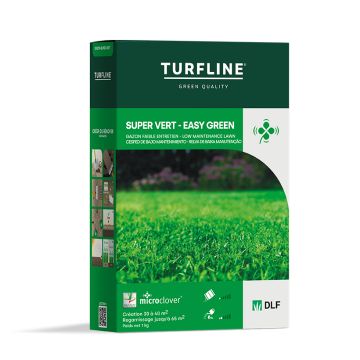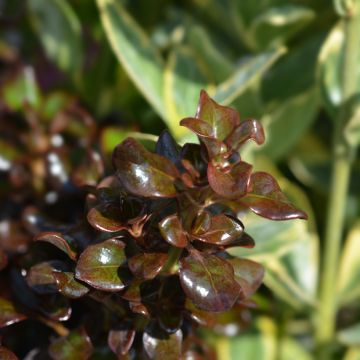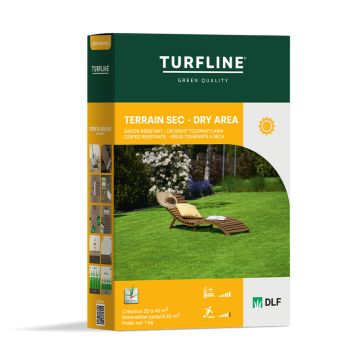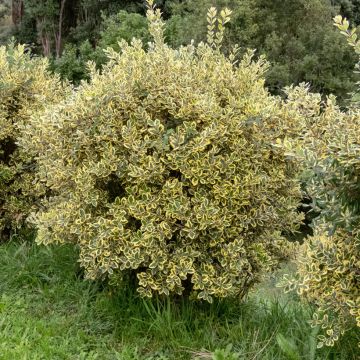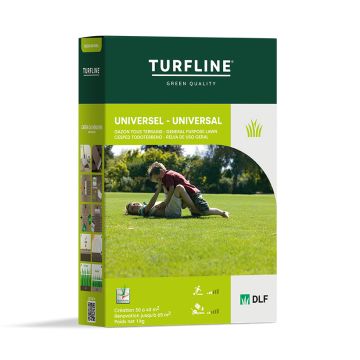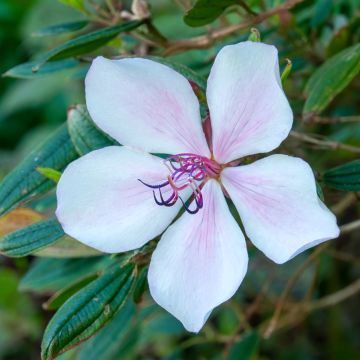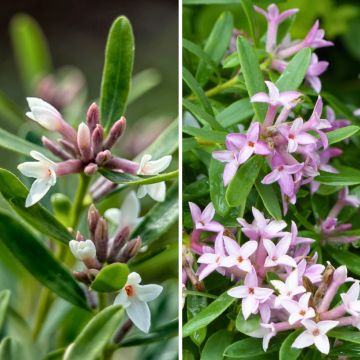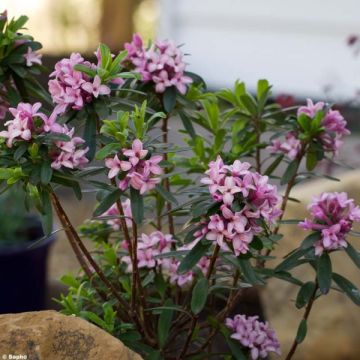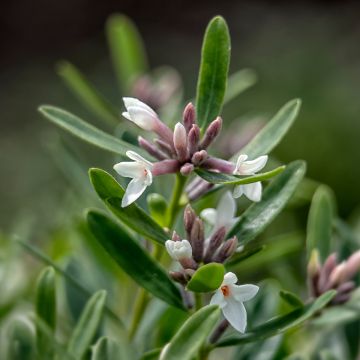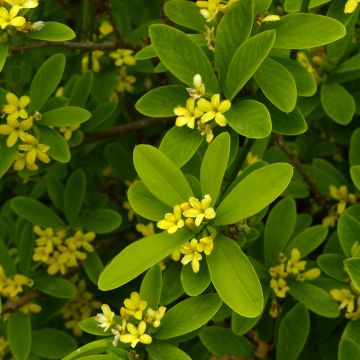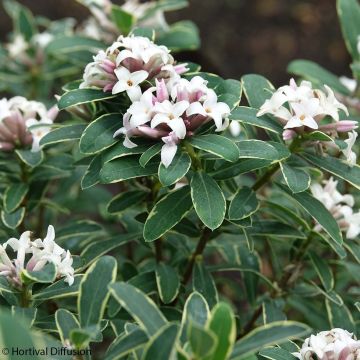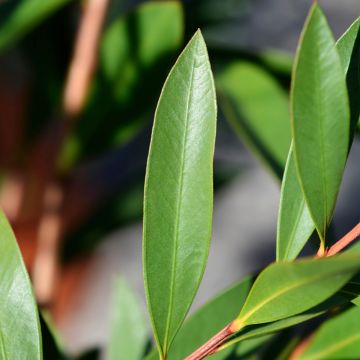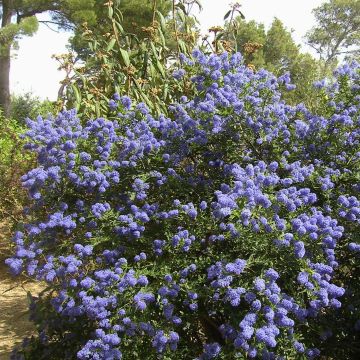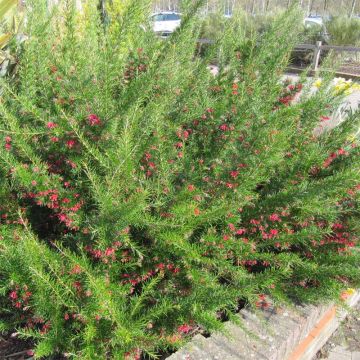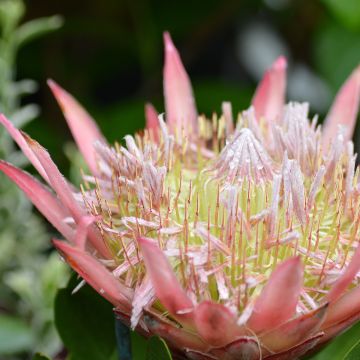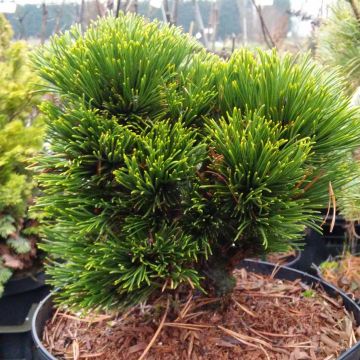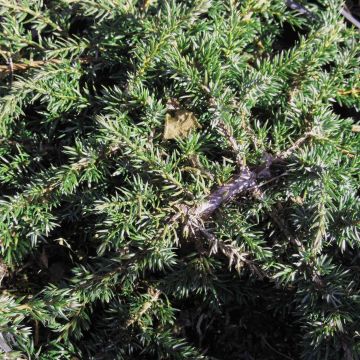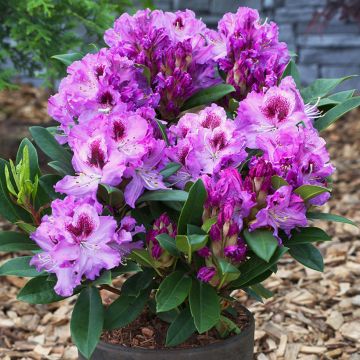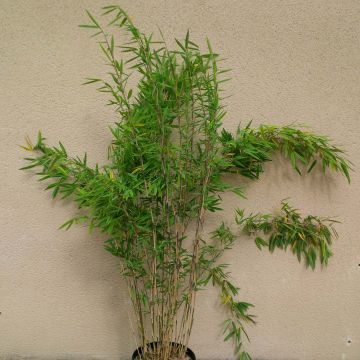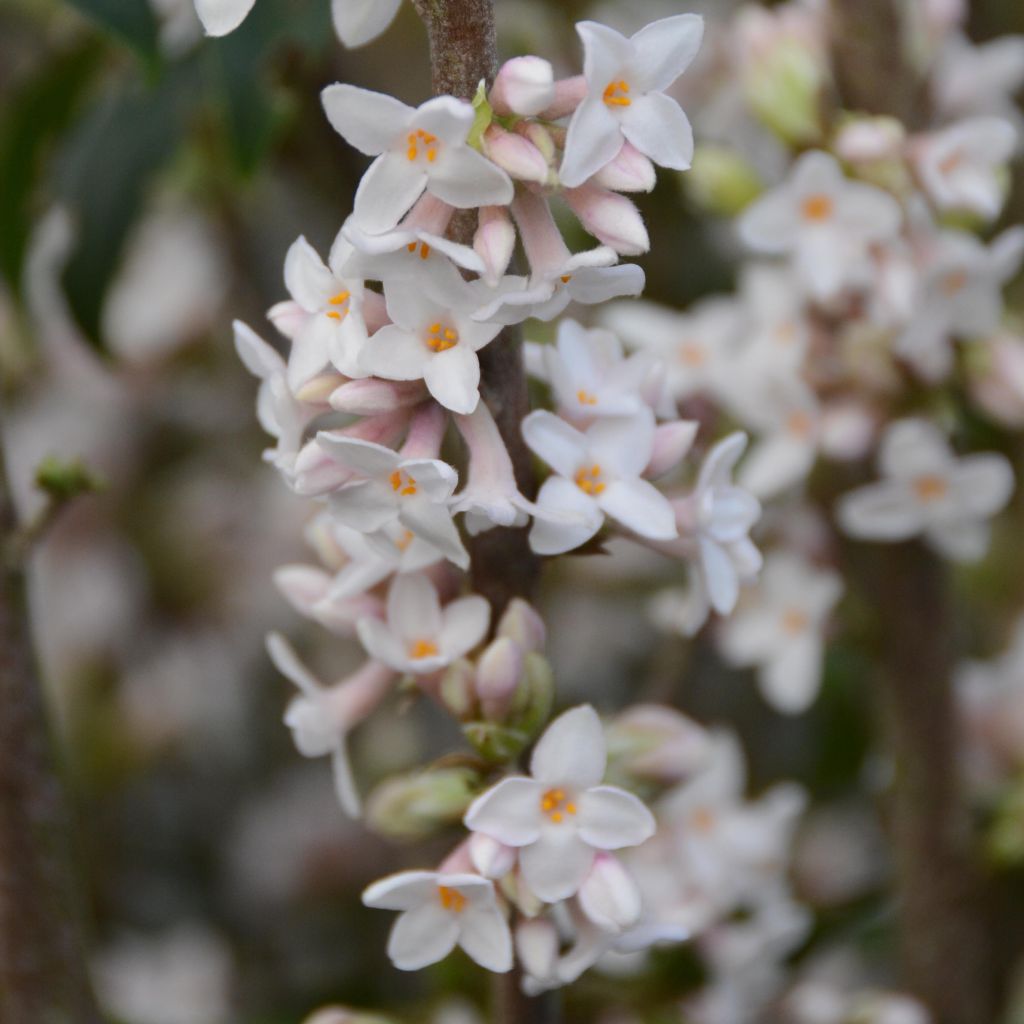

Daphné bholua
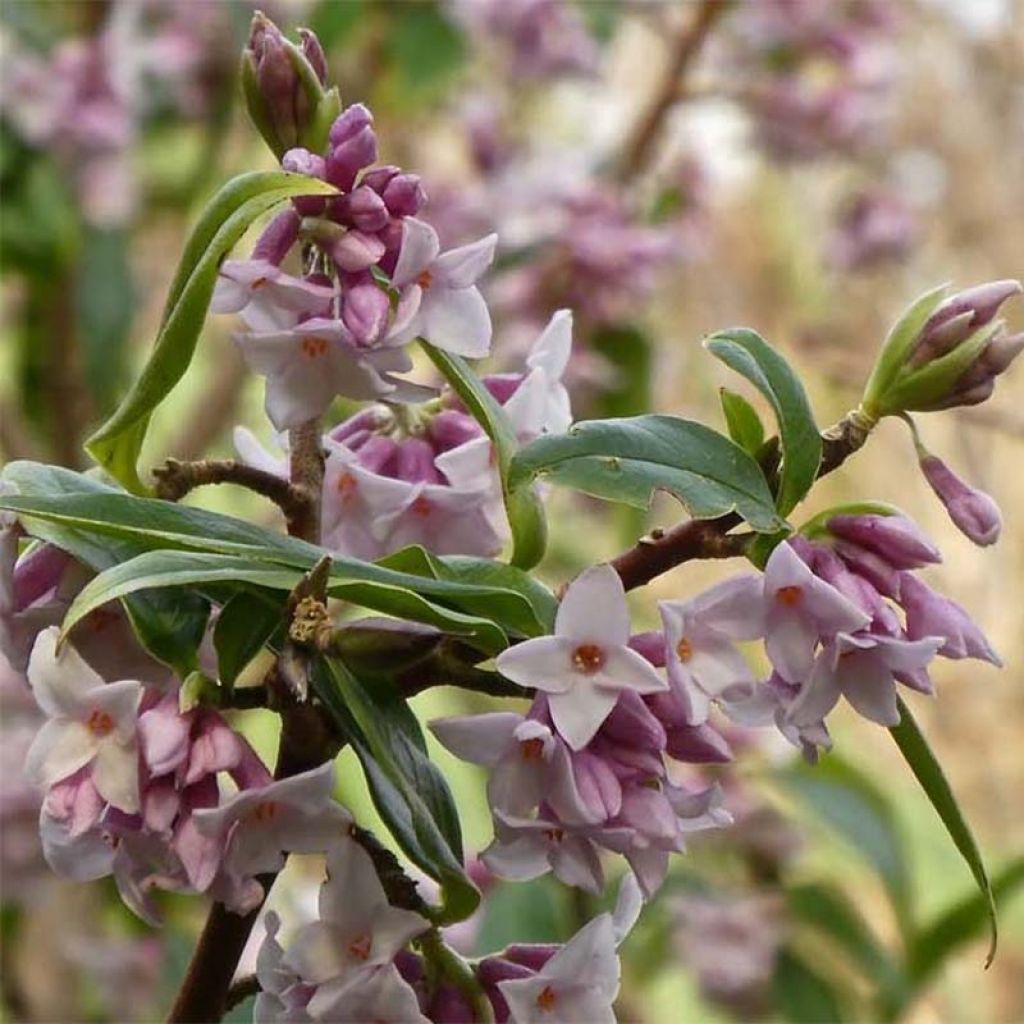

Daphné bholua
Daphne bholua
Daphne bholua
Nepalese Paper Plant
Why not try an alternative variety in stock?
View all →This plant carries a 24 months recovery warranty
More information
We guarantee the quality of our plants for a full growing cycle, and will replace at our expense any plant that fails to recover under normal climatic and planting conditions.
From €7.90 for pickup delivery and €6.90 for home delivery
Express home delivery from €8.90.
Does this plant fit my garden?
Set up your Plantfit profile →
Description
Daphne bholua is a botanical species originating from the Himalayas. It is valued for its early and remarkably fragrant lilac-pink flowering, and for its ease of cultivation in any light soil that is rich in humus and remains moist even in summer. It is adorned with beautiful dark green foliage that persists more or less in winter, but renews itself just after flowering. Its flowers perfume a whole area of the garden from the end of winter. In milder regions, it deserves to be planted near the house or not far from a passage, to enjoy its fragrance. Elsewhere, it will adapt well to pot cultivation, which allows it to be protected from severe frosts in winter.
Daphne bholua belongs to the Thymelaeaceae family. It is a large shrub native to the eastern Himalayas that grows in clear and humid undergrowth or at the edge of forests. The plant forms an erect shrub with a bushy habit, reaching an average height of 1.5m (5ft) with a spread of 1.2m (4ft), sometimes more in optimal growing conditions. When grown in a container, it will remain smaller. Its growth is quite slow. From the end of February (depending on the climate), it is adorned with pink-purple floral buds grouped in bouquets at the ends of the branches. These buds open into tubular and star-shaped flowers of a light lilac-pink colour, which emit a sweet and spicy fragrance with notes of clove. The large entire, lanceolate, leathery, and very dark and glossy green leaves are 6 to 10cm (2 to 4in) long and 1 to 2.5cm (1in) wide. They fall after flowering and are replaced by new leaves 3 weeks later. They are evergreen in winter when temperatures are mild, but can be scorched by temperatures around -5°C (23°F).
Daphne bholua naturally appreciates the same environments as camellias, azaleas and rhododendrons, with which it will form superb planting schemes. However, it is much less demanding in terms of soil pH and can be perfectly integrated into a more traditional shrub bed, but partially shaded, with Japanese quince, Forsythia, deutzia and other early-flowering shrubs. It can also be grown in a large container on a terrace or balcony. To enjoy its exceptional flowering and fragrance, it is wise to plant it near a window, terrace, path, or entrance. Its flowering branches are also very beautiful in bouquets, mixed with those of Japanese quince or Prunus.
Note: Daphnes are sometimes capricious plants, whose cultivation can be delicate if conditions are not suitable. They are reserved for experienced gardeners.
Daphne bholua in pictures


Plant habit
Flowering
Foliage
Safety measures
Botanical data
Daphne
bholua
Thymelaceae
Nepalese Paper Plant
Cultivar or hybrid
ingestion
Cette plante est toxique si elle est ingérée volontairement ou involontairement.
Ne la plantez pas là où de jeunes enfants peuvent évoluer, et lavez-vous les mains après l'avoir manipulée.
Pensez à conserver l'étiquette de la plante, à la photographier ou à noter son nom, afin de faciliter le travail des professionnels de santé.
Davantage d'informations sur https://plantes-risque.info
Other Daphne
View all →Planting and care
Plant in spring or autumn (in mild climates) in moist but well-drained fertile, light, acidic to neutral or even calcareous soil, rich in humus or leaf compost. It appreciates partial shade or a sunny but not scorching exposure (morning sun). It can withstand short frosts of around -10 to -12°C (14 to 10.4°F) (possibly more if planted in the ground for several years). Pruning is unnecessary except for dead branches. Do not let the soil dry out, apply an organic mulch or plant small perennials to protect the base. Avoid disturbing the roots. After flowering, apply organic fertiliser. Just like Daphne odora, it can sometimes be affected by the Marssonina virus.
Planting period
Intended location
Care
This item has not been reviewed yet - be the first to leave a review about it.
Evergreen shrubs
Haven't found what you were looking for?
Hardiness is the lowest winter temperature a plant can endure without suffering serious damage or even dying. However, hardiness is affected by location (a sheltered area, such as a patio), protection (winter cover) and soil type (hardiness is improved by well-drained soil).

Photo Sharing Terms & Conditions
In order to encourage gardeners to interact and share their experiences, Promesse de fleurs offers various media enabling content to be uploaded onto its Site - in particular via the ‘Photo sharing’ module.
The User agrees to refrain from:
- Posting any content that is illegal, prejudicial, insulting, racist, inciteful to hatred, revisionist, contrary to public decency, that infringes on privacy or on the privacy rights of third parties, in particular the publicity rights of persons and goods, intellectual property rights, or the right to privacy.
- Submitting content on behalf of a third party;
- Impersonate the identity of a third party and/or publish any personal information about a third party;
In general, the User undertakes to refrain from any unethical behaviour.
All Content (in particular text, comments, files, images, photos, videos, creative works, etc.), which may be subject to property or intellectual property rights, image or other private rights, shall remain the property of the User, subject to the limited rights granted by the terms of the licence granted by Promesse de fleurs as stated below. Users are at liberty to publish or not to publish such Content on the Site, notably via the ‘Photo Sharing’ facility, and accept that this Content shall be made public and freely accessible, notably on the Internet.
Users further acknowledge, undertake to have ,and guarantee that they hold all necessary rights and permissions to publish such material on the Site, in particular with regard to the legislation in force pertaining to any privacy, property, intellectual property, image, or contractual rights, or rights of any other nature. By publishing such Content on the Site, Users acknowledge accepting full liability as publishers of the Content within the meaning of the law, and grant Promesse de fleurs, free of charge, an inclusive, worldwide licence for the said Content for the entire duration of its publication, including all reproduction, representation, up/downloading, displaying, performing, transmission, and storage rights.
Users also grant permission for their name to be linked to the Content and accept that this link may not always be made available.
By engaging in posting material, Users consent to their Content becoming automatically accessible on the Internet, in particular on other sites and/or blogs and/or web pages of the Promesse de fleurs site, including in particular social pages and the Promesse de fleurs catalogue.
Users may secure the removal of entrusted content free of charge by issuing a simple request via our contact form.

































